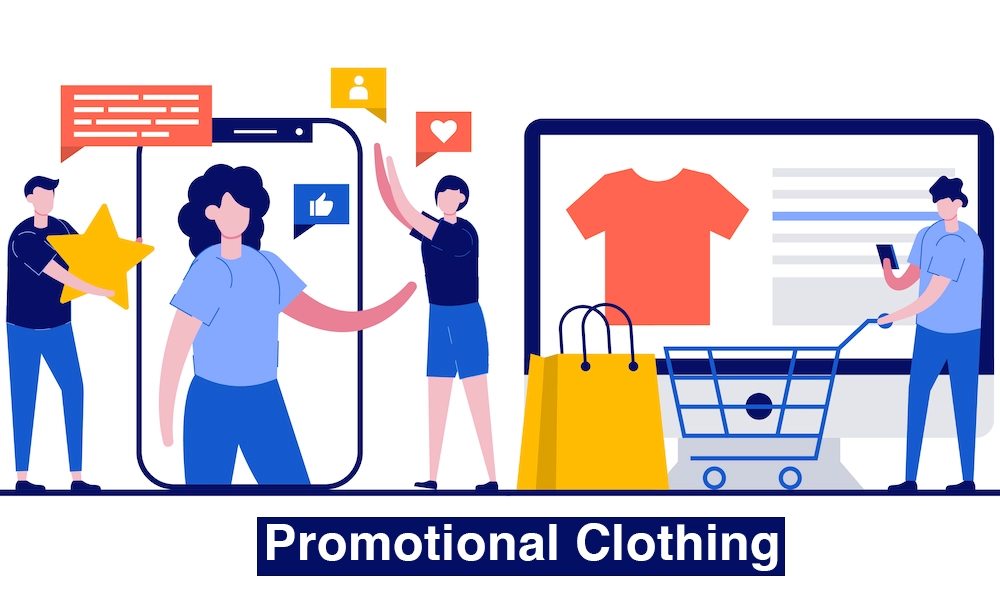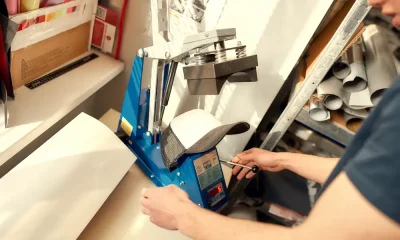Marketing
Marketing With Promotional Clothing

Have you considered a promotional clothing marketing strategy for your business?
Promotional clothing can create a strong brand presence even if your business is online. By leveraging the power of clothing as a walking billboard, your business will increase brand visibility and recognition among your target audience.
The success of a promotional clothing marketing strategy can vary based on several factors, including the target audience, the quality of the clothing items, the design, and how well the plan aligns with the brand’s overall marketing objectives.
Keep reading to learn why a promotional clothing marketing strategy works and what you need to consider to get it to produce results for your business.
Why Promotional Clothing?
In today’s highly competitive market, it pays to use every trick in the book to get ahead of your competitors. Eye-catching, memorable, and high-quality clothing will entice your audience to wear it. From custom t-shirts and hats to branded jackets and accessories, there are many items you can use for any marketing campaign.
In addition to increasing brand awareness, promotional clothing can foster unity and belonging among employees and customers. For example, you can create a cohesive and professional look that reinforces your brand identity by outfitting your team in custom apparel.
Additionally, providing a branding work uniform for your staff will save them money on purchasing suitable clothing.
When your audience wears your promotional clothing, the potential for advertising is seemingly huge. Let’s say, for example, that the company in question has produced a range of promotional t-shirts. A lady gets her hand on one and wears it for a full day out shopping. Imagine how many people may have seen her in that t-shirt and have taken note of the company’s logo and brand.
Whether you’re looking to promote a new product, launch a marketing campaign, or strengthen your brand presence, a promotional clothing marketing strategy can help you achieve your goals. Another example is you can use promotional clothing for specific events or campaigns, extending the life of those events in the minds of your audience.
Therefore, a promotional clothing strategy is a powerful marketing and brand-building tool. Investing in custom apparel can create a tangible and lasting connection with your audience, driving brand loyalty and engagement.
What do you need to consider before launching a clothing campaign?
Promotional Clothing Marketing Considerations
The success of a promotional clothing marketing strategy can vary based on several factors, including the target audience, the quality of the clothing items, the design, and how well the strategy aligns with the brand’s overall marketing objectives.
1. Audience
Before choosing an item of clothing for a marketing campaign, get answers to these questions:
- Does the clothing item align with your brand’s image and complement your products?
- Will your intended audience perceive it as a seamless addition to your brand?
When choosing promotional clothing as a marketing strategy, the business needs to understand the preferences and needs of its target audience.
Quality and Design
You will need an answer to the following question to ensure the clothing resonates with your target audience and fits their lifestyle.
- Does your target audience wear and value clothing as a form of self-expression or brand loyalty?
Consider their age, income level, lifestyle, and fashion preferences when answering the question.
It is essential to consider the quality and design of promotional clothing. People are more likely to wear and keep items that are comfortable, well-designed, and of good quality.
High-quality items can also reflect the brand’s commitment to excellence and provide long-term brand exposure.
2. Marketing Goals
One outcome we’ve mentioned so far is brand visibility; you can set it as a marketing goal.
Visibility
Ask yourself this question:
- Will the clothing enhance the visibility and recognition of the brand among the intended target audience?
Engagement
Customer engagement creates memorable customer experiences. You’ll want to understand if promotional clothing can enhance your customer journeys.
- Will the clothing enhance the visibility and recognition of the brand among the intended target audience?
Leads and Sales
Set marketing goals for leads generated and sales achieved from investing in promotional clothing marketing.
Is the clothing used as a direct tie to a sales promotion or an incentive to generate leads and customer contact information?
Now, we need to move on to goals for measuring and analyzing a promotional clothing campaign.
3. Measurement and Analysis
All marketing campaigns need to be measurable, and you must work out how to do it with a promotional clothing campaign. When creating a clothing marketing campaign, establish clear metrics to track success. Some of the apparent metrics to track include:
- Website Traffic
- Brand mentions
- Social media engagement
- Sales conversions
4. Affordability
Promotional clothing marketing requires investment. Your marketing budget must cover the expenses of creating, producing, and delivering the clothes, including materials, labor, and storage. That’s just the production and distribution costs. There are more expenses to consider, too. For example, inventory management and fulfillment, i.e., shipping.
Answering the following questions will ensure your business can budget for promotional clothing campaigns.
- Are you able to manage inventory levels efficiently and prevent situations of overstocking or understocking?
- Do you have the capability to handle order processing, shipping, and returns for clothing items?
5. Distribution Strategy
Effective distribution strategy is crucial for the success of promotional clothing. It should align with the overall marketing plan and include giving items away at events, including in promotional packages or selling them. Why not create an additional revenue stream with your promotional products? Sell them online in your ecommerce store and use your usual fulfillment process and providers.
Social Media Engagement
Encouraging customers to share images and videos of their branded clothing on social media platforms can amplify the reach of the marketing strategy, generate user-created content, and create a sense of community around the brand.
Finding Promotional Clothing Suppliers
Where do businesses find clothing for promotional marketing? The starting place is online. However, before you search for promotional product suppliers, here are some tips on preparing for quotes.
1. Preparing for Quotes
Your business’s sustainability policy should be considered when choosing clothing and suppliers.
Make sure you fully understand your ethical values and sustainability commitments. The last outcome you need is promotional clothing that offends your customers! Therefore, choosing providers who are as discerning as your business is essential. This will ensure that the production and sourcing of your clothing align with your company’s values.
2. Visit Online Marketplaces
Many online marketplaces have clothing suppliers and promotional product distributors. Your business will likely need both unless you can choose a distributor with quality clothing and custom design production for a price you’re willing to pay.
Visit Alibaba.com – it’s a B2B marketplace that is very popular with clothing suppliers from everywhere globally. Amazon.com is another first-rate marketplace. Also, visit eBay and a couple you may not know, including ECPlaza and HKTDC.
Additionally, there are online directories to connect you with clothing and product distributors, including IndustryNet and Thomasnet. Another strategy is to go to tradeshows that focus on promotional products, as they are frequented by suppliers.
2. Choosing a Supplier
Use the same rules you apply when choosing a supplier, including:
- Know the product – i.e., know what you want and get samples
- Know your budget – have a budget before selecting suppliers
- Timeframes – i.e., your turnaround time
- Quotes – get many quotes from suppliers so you learn of the best deals
- Contact your legal advisor to approve the contract, including the fine print!
Final Thoughts
Getting started will always require a good, hard look at your competition. How are your competitors using clothing for promotion? How can you differentiate your approach and identify potential opportunities?
How effective your clothing promotion is will depend on the factors mentioned above, including a discerning approach to choosing the design, quality, and overall appeal of the clothing.






